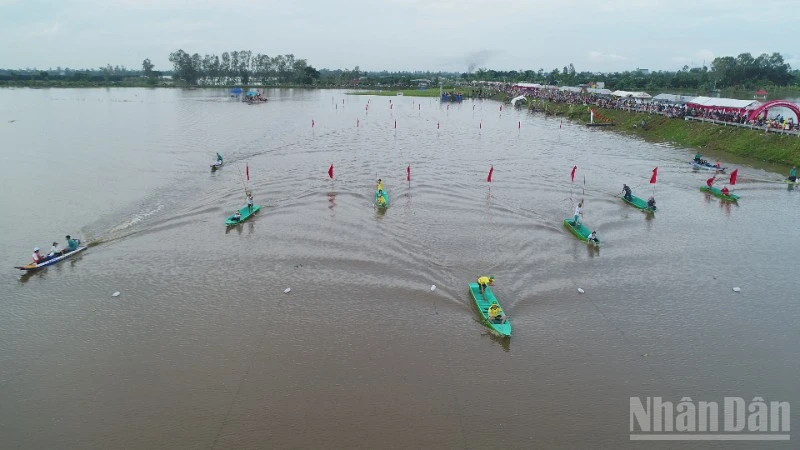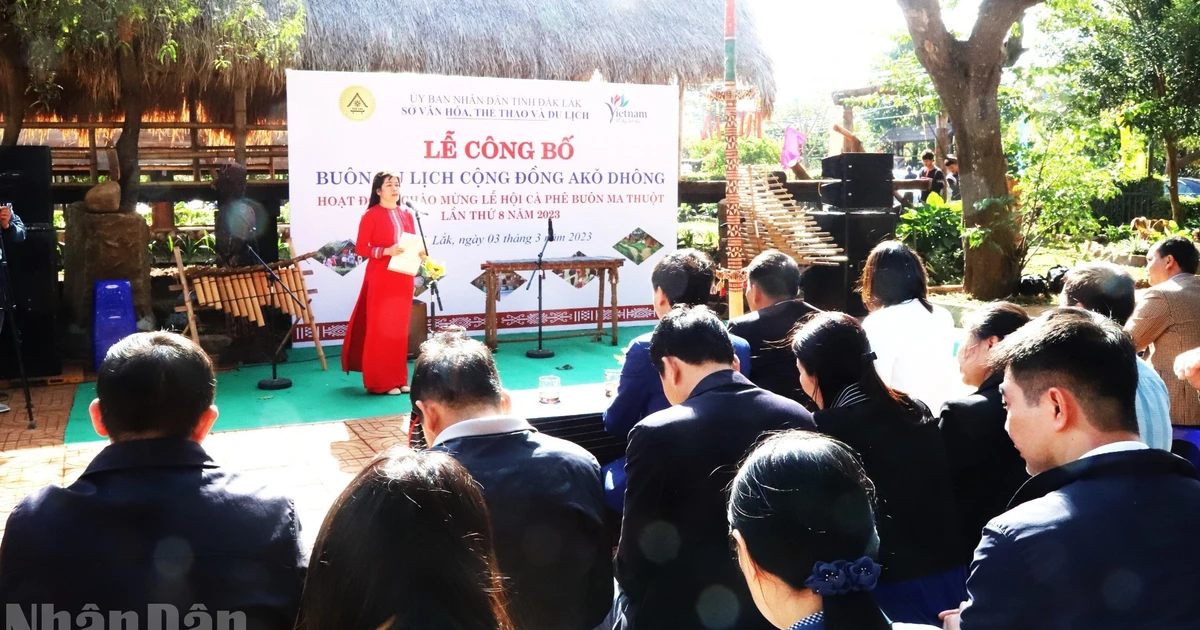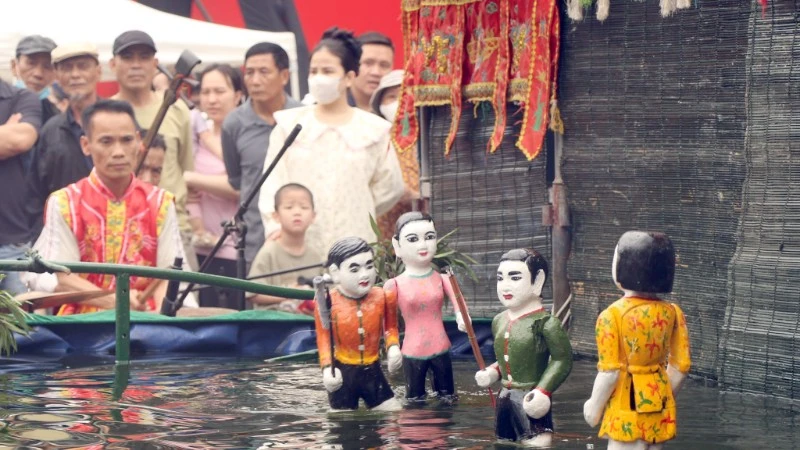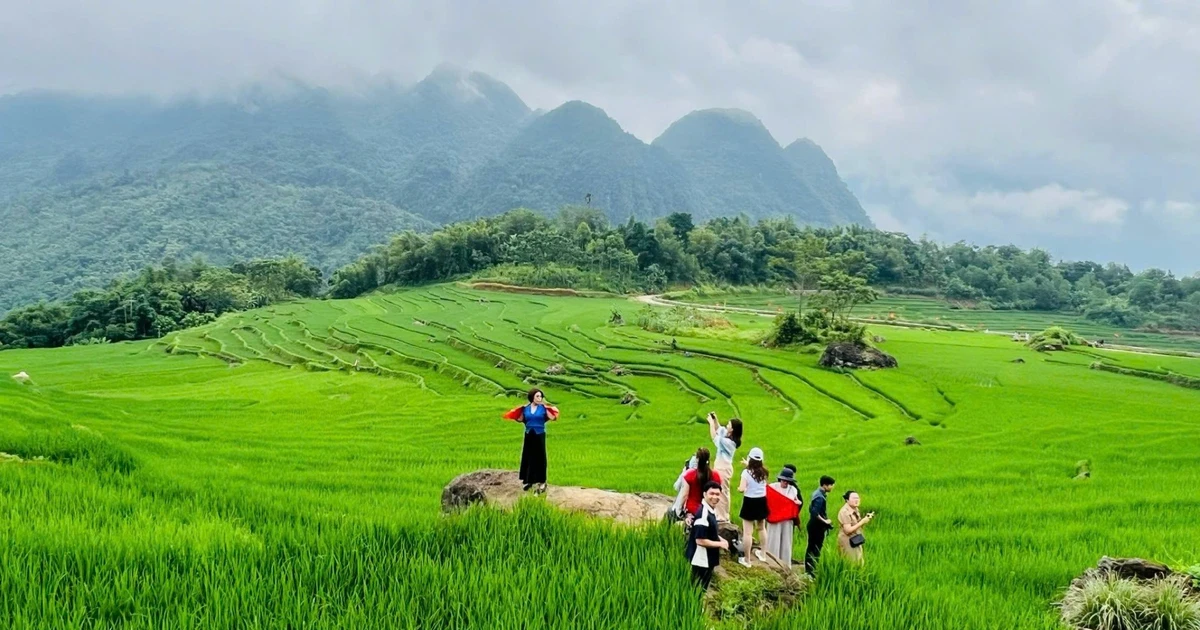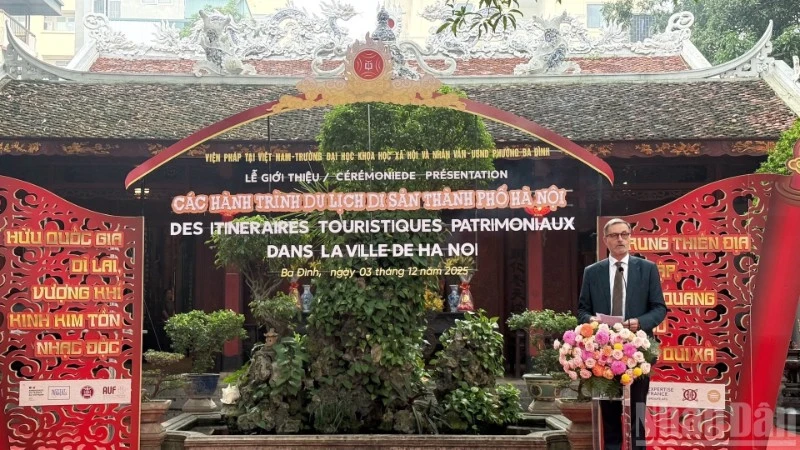The province has developed an overall tourism development plan through 2030, with a vision to 2050. At the same time, it has plans for tourist zones and destinations, focusing on investing in and upgrading the infrastructure quality of these planned tourism zones. To date, the entire province has one tourist area and 12 tourist sites recognised, while five tourist areas and sites have been planned as key tourist areas and sites.
A system of high-class restaurants, hotels, and entertainment areas has been invested in and built to meet tourists' accommodation needs. With nearly 4,000 standard rooms and 30 tourism and passenger transport businesses operating stably, the number of staff serving in tourism businesses has increased rapidly and improved in quality to meet tourists' demands.
Many tourists visiting Ha Nam have chosen the tourist routes of Tam Chuc Pagoda, Dia Tang Phi Lai Pagoda, Phat Quang Pagoda, and Cay Thi Pagoda, which they found very impressive. Nguyen Thi Mai Lien, a tourist from Hanoi, shared, “After experiencing the spiritual tourist destinations in Ha Nam, I was truly captivated by the majestic, poetic, and peaceful natural beauty of the pagodas here. The roads are wide and conveniently connected between destinations. Each destination has brought me a different and interesting experience and feeling.”
To improve the quality of tourism products and promote the rapid and sustainable development of tourism by 2030, the provincial Department of Culture, Sports, and Tourism has actively advised the province authorities to promote investment attraction and call for investment in ecotourism, resort tourism, and the construction of restaurants, hotels, shopping centres, and entertainment areas on a large scale and of high quality to improve service quality and meet the needs of tourists.
Mai Thanh Chung, Director of the Provincial Department of Culture, Sports, and Tourism, said that Ha Nam Province has prioritised investing in the planning of heritage spaces linked with the planning of tourism zones and routes to create attractive tourism products, which can connect with the provinces in the Red River Delta and across the country.
Key tourism areas of the Red River Delta will be developed into unique cultural and spiritual tourism routes, such as Bai Dinh-Trang An-Tam Chuc, Huong Pagoda-Tam Chuc Pagoda, Tran Thuong Temple (Ha Nam) and the Tran Temple (Nam Dinh), among others.
In the first nine months of 2024, Ha Nam welcomed 4.2 million visitors (a 6.8% increase compared to the same period in 2023) with total revenue of over 3.2 trillion VND (a 6.6% increase from the same period in 2023).
In 2023, Ha Nam was honoured with the World Travel Award as the World’s Leading Regional Cultural Destination. In 2024, the province received two World Tourism Awards: Asia’s Leading Emerging Tourism Destination and Leading Regional Cultural Destination in Asia.
These meaningful awards confirm Ha Nam’s potential and appeal to international friends in terms of natural resources and cultural heritage while also recognising the efforts made by local authorities and people in preserving and promoting these values.
Truong Quoc Huy, Chairman of the Ha Nam Provincial People’s Committee, said that Ha Nam has planned areas for tourism development and distinctive tourism products that showcase each locality's unique characteristics.
With the determination to turn the area into a tourism and resort centre for the Red River Delta region, a destination that harmoniously combines various tourism types such as ecological tourism, resorts, entertainment, creativity, and culture, Ha Nam aims for tourism to become a key economic sector by 2030, contributing around 10% of the provincial GRDP.
To ensure Ha Nam’s tourism develops sustainably in line with its potential and strengths, Nguyen Le Phuc, Deputy Director of the Vietnam National Tourism Administration, proposed several solutions, including increasing the use of digital technology for promoting the local image, improving infrastructure such as hotels, restaurants, entertainment areas, and focusing on developing high-quality human resources for tourism services.

